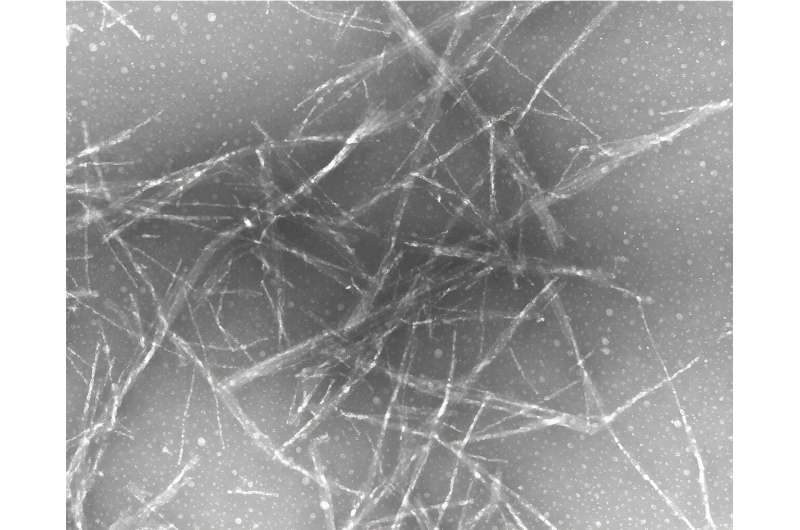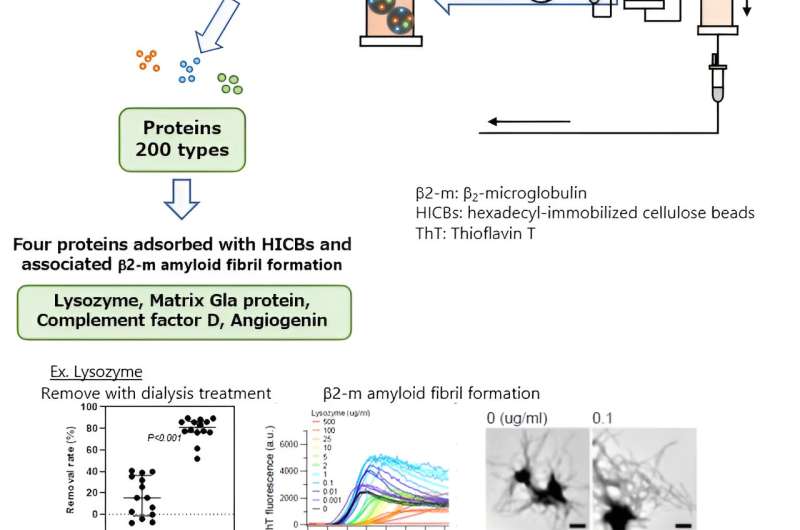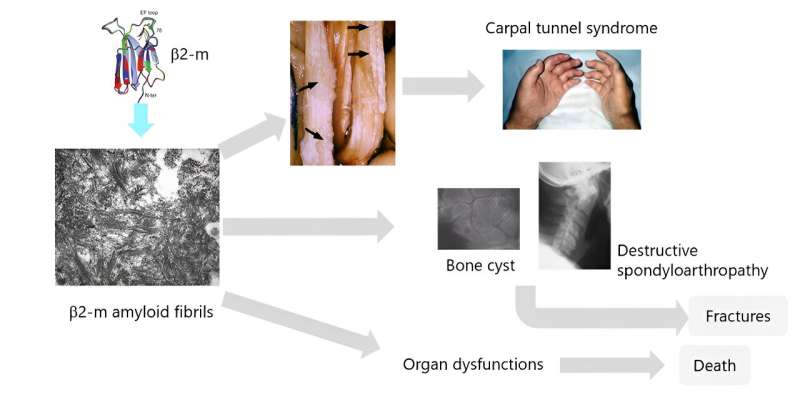This article has been reviewed according to Science X's editorial process and policies. Editors have highlighted the following attributes while ensuring the content's credibility:
fact-checked
trusted source
proofread
Discovery of proteins associated with the progression of dialysis-related amyloidosis

Dialysis patients often develop dialysis-related amyloidosis and exhibit bone and joint disorders that impair their activity of daily living. Blood purification devices consisting of hexadecyl-immobilized cellulose beads aimed at removing the precursor protein, β2- microglobulin (β2-m), are used in the treatment of dialysis-related amyloidosis.
Dr. Yamamoto and colleagues conducted a comprehensive analysis of proteins adsorbed onto blood purification devices, which resulted in the identification of 200 types of proteins, including β2-m. Among these, several molecules, such as lysozyme, were shown to be involved in amyloid fibril formation. The findings were published in the scientific journal Amyloid: Journal of Protein Folding Disorders.
Patients with advanced chronic kidney disease (CKD) require kidney replacement therapy, such as hemodialysis, to manage their condition. Hemodialysis patients often experience various symptoms, leading to a compromised quality of life and reduced activity levels.
Itching is a common symptom frequently observed in hemodialysis patients. Although its exact causes remain unclear, a survey conducted in Japan in 2000 found that itching was present in 73% of hemodialysis patients, and it was associated with elevated levels of β2-microglobulin, calcium, phosphorus, or parathyroid hormone in the blood.

Subsequently, improvements in hemodialysis therapy and pharmacological treatments have led to changes in the severity of itching and its associated factors in hemodialysis patients.
Uremic toxins are a group of molecules whose concentrations increase in the blood due to kidney disease. Those molecules are associated with systemic diseases and prognosis in patients with end-stage kidney disease. Among them, molecules with high protein-bound properties, called PBUTs, such as indoxyl sulfate, are difficult to remove by dialysis and have been reported to be associated with various pathologies. However, there have been no reports regarding their association with itching in hemodialysis patients.

Therefore, Dr. Yamamoto's team investigated itching and factors associated with it, particularly focusing on PBUTs in hemodialysis patients.
In this study, the team extracted adsorbed proteins from β2-m adsorption columns on hemodialysis patients with dialysis-related amyloidosis, and analyzed them through mass spectrometr. As a result, 200 types of proteins, including β2-m, were detected.
Among them, four proteins (lysozyme, angiogenin, matrix Gla protein, and complement factor D) were identified, which are present in amyloid tissue and highly adsorbed by the β2-m adsorption column. When β2-m was reacted with those proteins in vitro, the proteins were involved in β2-m amyloid fibril formation.
More information: Suguru Yamamoto et al, Mass spectrometry-based proteomic analysis of proteins adsorbed by hexadecyl-immobilized cellulose bead column for the treatment of dialysis-related amyloidosis, Amyloid (2024). DOI: 10.1080/13506129.2024.2315148


















